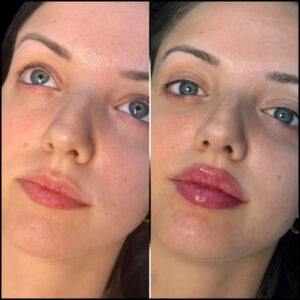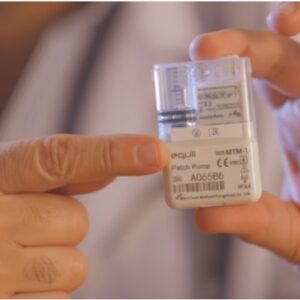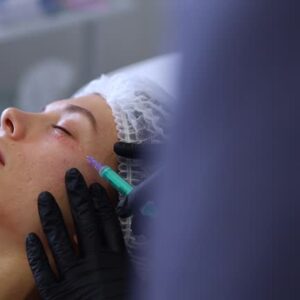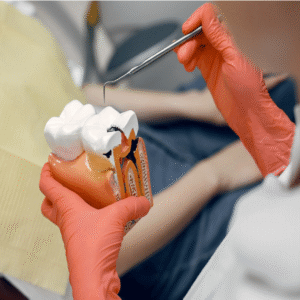Rosacea is a common chronic skin condition that affects millions of people worldwide. Characterized by redness, visible blood vessels, and sometimes acne-like bumps, it often causes discomfort and self-consciousness. Managing rosacea effectively requires a comprehensive approach, guided by Best Dermatologist in Abu Dhabi. In this blog, we explore what a dermatologist recommends for rosacea, including lifestyle modifications, skincare routines, and treatment options to help control symptoms and improve skin health.
Understanding Rosacea: An Overview
What Is Rosacea?
Rosacea is a long-term skin disorder that primarily affects the face, particularly the cheeks, nose, chin, and forehead. It manifests as persistent redness, flushing, and sometimes bumps or pimples. While the exact cause remains unknown, it is believed to involve a combination of genetic, environmental, and vascular factors. Understanding the nature of rosacea is essential for effective management and treatment.
Common Symptoms and Triggers
The symptoms of rosacea can vary from person to person. Typical signs include redness, visible blood vessels, swelling, and pimples. Certain triggers such as hot weather, spicy foods, alcohol, stress, and skincare products can exacerbate symptoms. Identifying personal triggers is vital for managing flare-ups.
The Role of a Dermatologist in Managing Rosacea
Professional Diagnosis and Personalized Treatment Plan
A dermatologist is a key figure in diagnosing rosacea accurately and devising a personalized treatment plan. They evaluate skin type, severity, and triggers to recommend suitable therapies. Early consultation can prevent progression and improve quality of life.
Why Professional Guidance Is Essential
Since rosacea symptoms can resemble other skin conditions, professional diagnosis ensures appropriate treatment. Dermatologists can distinguish rosacea from acne, eczema, or allergic reactions, guiding effective management tailored to individual needs.
What a Dermatologist Recommends for Rosacea
Lifestyle and Environmental Modifications
Avoiding Known Triggers
One of the primary recommendations from dermatologists is to avoid personal triggers that cause flare-ups. Common triggers include extreme temperatures, spicy foods, alcohol, hot beverages, and harsh skincare products. Maintaining a diary to track triggers can be helpful in identifying and avoiding them.
Protecting Skin from Sun Exposure
Sunlight is a common trigger for rosacea. Dermatologists advise using broad-spectrum sunscreens with high SPF, wearing protective clothing, and seeking shade during peak sunlight hours to safeguard sensitive skin.
Skincare Routine Adjustments
Using Gentle, Non-Irritating Products
Dermatologists emphasize the importance of a gentle skincare routine. Cleansers should be mild and free from alcohol, fragrances, or other irritants. Moisturizers formulated for sensitive skin can help maintain the skin barrier and reduce redness.
Avoiding Over-washing and Scrubbing
Over-cleansing or scrubbing can worsen rosacea symptoms. Dermatologists recommend washing the face twice daily with lukewarm water and a gentle cleanser, followed by patting dry.
Medical and Topical Treatments
Prescription Topical Medications
Dermatologists often prescribe topical treatments such as metronidazole, azelaic acid, or ivermectin to reduce inflammation and redness. These medications can be effective in controlling mild to moderate symptoms.
Oral Medications
For more severe cases, oral antibiotics or other medications may be recommended to manage inflammation and prevent flare-ups. These are typically prescribed for a limited duration under professional supervision.
Advanced Treatment Options
Laser and Light Therapy
In cases where visible blood vessels or persistent redness are prominent, dermatologists may suggest laser therapy or intense pulsed light (IPL) treatments. These procedures target blood vessels, reducing redness and improving skin appearance.
Other Procedural Interventions
Additional procedures such as dermabrasion or electrosurgery can be considered for specific symptoms, but these are tailored to individual needs and skin response.
Long-Term Management and Follow-Up
Regular Monitoring and Adjustments
Rosacea is a chronic condition requiring ongoing management. Regular dermatological follow-up allows for adjustments in treatment strategies based on the skin’s response and changing triggers.
Emphasizing Consistency and Patience
Effective management requires consistent skincare routines and adherence to prescribed treatments. Patience is crucial, as visible improvements may take weeks or months.
Lifestyle Tips to Complement Medical Advice
Diet and Nutrition
A balanced diet that avoids known triggers like spicy foods and hot beverages can help control symptoms. Including anti-inflammatory foods such as omega-3 fatty acids may benefit skin health.
Stress Management
Stress can trigger or worsen rosacea flare-ups. Techniques such as meditation, yoga, or deep-breathing exercises can be beneficial in managing stress levels and reducing skin inflammation.
Avoiding Harsh Skincare Products
Using skincare products designed for sensitive skin minimizes irritation. Avoiding products with alcohol, fragrances, or astringents is recommended.
When to Seek Medical Advice
Recognizing the Signs for Professional Consultation
Persistent or worsening redness, bumps, or visible blood vessels should prompt a consultation with a dermatologist. Early intervention can prevent disease progression and improve skin quality.
The Importance of Customized Treatment Plans
Every individual’s skin responds differently; therefore, personalized treatment plans crafted by a dermatologist are essential for optimal results.
FAQs About Rosacea Management
Q1: Can rosacea be cured completely?
While rosacea cannot be cured, it can be effectively managed with appropriate treatments and lifestyle modifications, leading to significant symptom control.
Q2: Are there any natural remedies for rosacea?
Natural remedies may help soothe skin, but they should complement professional treatments. Always consult a dermatologist before trying new remedies.
Q3: How long does it take to see improvement in rosacea symptoms?
Improvements can vary depending on severity and treatment adherence. Generally, signs of reduction in redness or bumps may be seen within a few weeks.
Q4: Is rosacea linked to other health conditions?
Rosacea has been associated with certain conditions, such as eye problems and heart health, but a dermatologist can assess individual risk factors during consultation.






